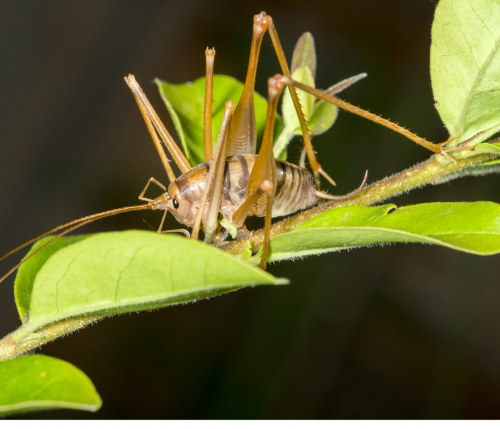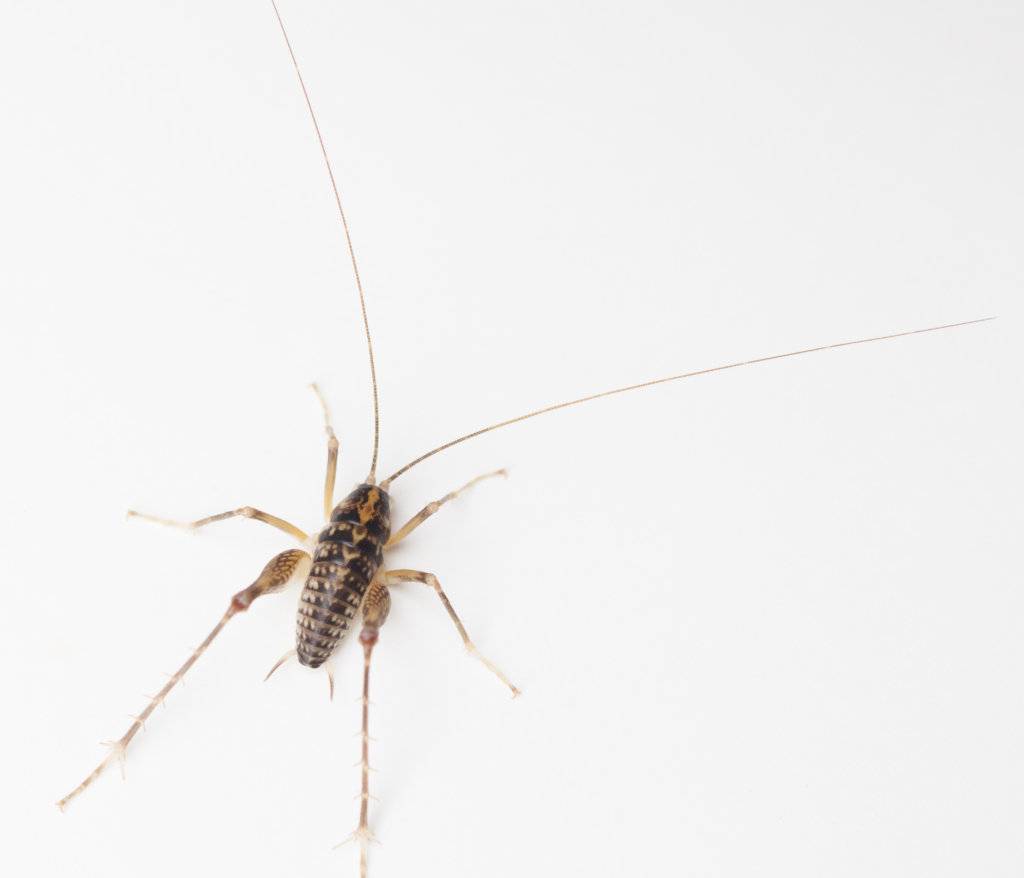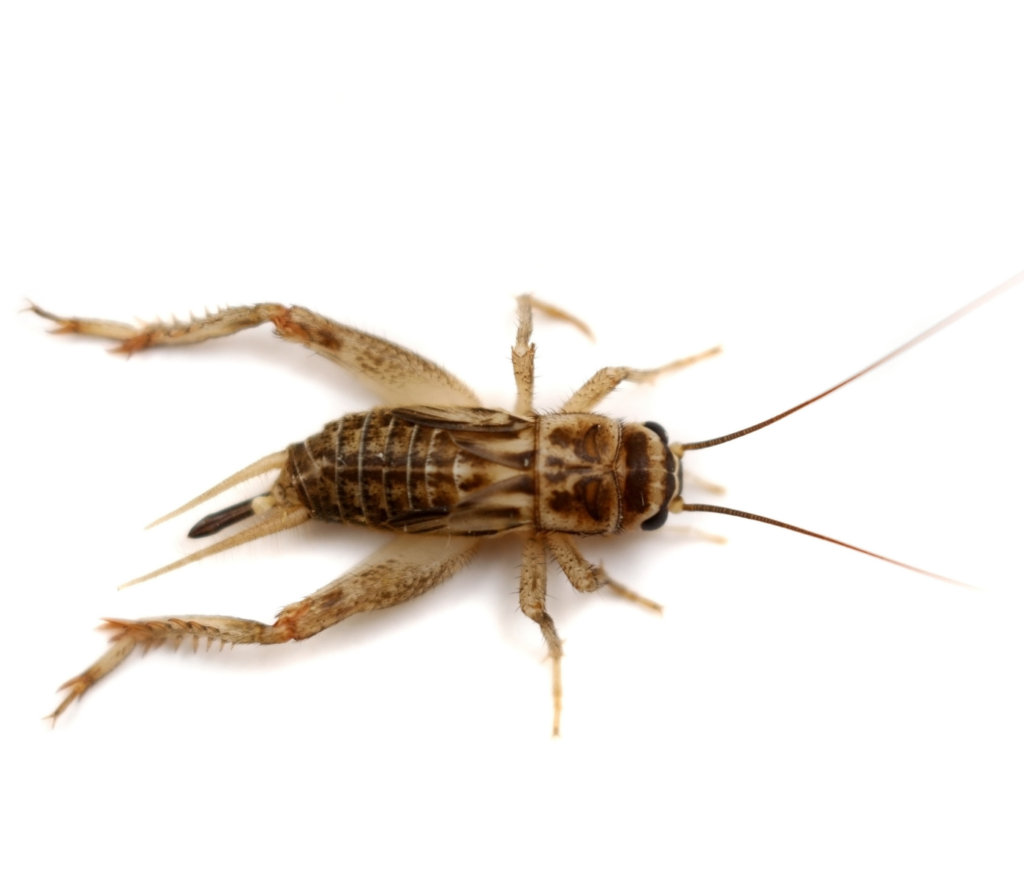Crickets are typically viewed as unharmful insects around your home.
Unfortunately, the same doesn’t apply to camel crickets.
Camel cricket infestations can grow quickly and invade your home. Not to mention these insects are unsightly and can damage your belonging if they invade the inside of your home.
Don’t worry, I’m here to help.
In this post, I’ll go over what you need to get rid of camel crickets once and for all.
Let’s get started.
What do camel crickets look like?

Before you do anything its important that you identify the type of camel cricket in your home.
The most common crickets in the U.S are the field cricket and house cricket.
Camel crickets get their name from their signature humped back. This is one of their key characteristics.
They also commonly referred to as cave crickets or spider crickets because they are commonly found in caves and can resemble a spider.
There are some other key characteristics that will help you identify camel crickets.
Below are some key characteristic of camel crickets:
- 13 – 33 mm long
- Wingless
- Very large hindlegs
- Very long antenna
- Light brown / grey color with black spots across their body
Camel Crickets Vs. House Crickets


Camel crickets and house crickets are quite easy to distinguish each other. Below are some key points you can look for if you can tell the difference between camel crickets and house crickets.
- House crickets are significantly smaller than camel crickets.
- Camel crickets also have much longer hind legs and antennas than house crickets.
- They are a light-brown color with black spots around their body while house crickets are one solid color.
Where Do Camel Crickets Live?
Camel crickets are found across the U.S.
There are several different species of camel crickets that are each adapted to live in different environments.
They are more common in the east U.S. The high humidity and moisture in these regions make it ideal for camel crickets.
Camel crickets are also common in the western coastal U.S states such as California, Oregon, and Washington.
Where Do Crickets Hide?
Camel crickets are versatile insects that eat a variety of different materials. They tend to consume organic materials such as fungi, leaves, and other dead insects.
Camel crickets will also consume other materials such as wood, carpet, and cardboard. In some instances, they will also eat other insects, including other camel crickets.
Since camel crickets don’t rely on a single source of food, they can live in various areas.
How To Get Rid of Camel Crickets?
1. Eliminate Moisture
One of the most effective ways you can get rid of camel crickets is by eliminating moisture.
Moisture creates an ideal location for camel crickets to live.
The moisture makes it easier for them to move around and reproduce.
There are certain sources of moisture you won’t be able to eliminate, such as rain or natural streams.
Your home must have the proper drainage to deal with natural water.
Gutters, downspouts, and drains are essential to dealing with moisture issues.
When eliminating moisture around your home, you can target pipes or other potential water sources. This includes a water hose, pipes from walls around your home, sprinklers, gutters, downspouts, and birdbaths.
Eliminate these sources of water will help eliminate any potential hiding places for camel crickets.
Indoors you can make sure you don’t have any leaking pipes or locations around your home that are high in humidity and moisture.
2. Glue Boards
Glue boards are an effective way to get rid of camel crickets. These are especially effective if they are inside your home.
You can place these glue boards inside your house to quickly trap the camel crickets without much effort.
You want to place these glue boards in places where camel crickets are likely to hide. Camel crickets are likely to hide in the dark, humid, cluttered areas with plenty of protection.
You can also place glue boards around key entry points around your home to get rid of camel crickets. At the corners of doorways, cracks, holes, or garage doors are common entry points that camel crickets use to enter homes.
3. seal Entry Points
Cricket infestations always start outdoors. To ensure that they don’t make their way inside your home, you should seal potential entry points into your home.
While camel crickets are larger than house crickets, they can still fit in relatively small crevices to enter your home.
Inspect the outside of your house if you have a camel cricket infestation. Key areas you want to ensure that is sealed properly include
- Window sills
- Doors sills
- Foundation
- Cracks
- Holes
Another common way that camel crickets enter homes is under doors or through the small gaps on doors and windows.
One way to eliminate this entry point is to weatherstrip your home. This includes adding door sweeps and using team strips along with door and window frames.
This will make it impossible for camel crickets to enter your home.
You must inspect any old weatherstrips you have around your home. These strips can wear down or tear and become ineffective.
Replace any areas that are damaged or not holding their form.
4. Insecticides
Using insecticides around your yard and the outside of your home is also very effective at eliminating camel cricket infestations.
Typically insecticides are only necessary when infestations have grown large. Small infestations can be managed with other natural methods.
I recommend using a granule and a liquid insecticide. Granules are highly effective if you have large yards with lots of bushes or plants.
You can sprinkle the granules over your entire yard and apply water. The water will break down the granules and allow the insecticide to spread throughout your yard.
I recommend a liquid insecticide that you can apply with a pressurized sprayer.
This will allow you to easily apply the insecticide to the foundation of your home as well as around entry points such as windows and doors.
Liquid insecticides are also effective if you have outdoor furniture, sheds, piles of wood, or other items granules won’t protect outdoors.
5. Vacuum
If you have camel crickets inside, using a vacuum with a hose is a great way to get rid of these insects.
Since camel crickets typically hide on walls and hard-to-reach areas, the vacuum allows you to remove them when sticky traps aren’t working.
Be aware that camel crickets will jump if they are frightened. Wait until you find them before turning on your vacuum.
Vacuums are also effective because they allow you to trap them even if they initiate their jump.
Wet-dry vacuums are the most effective because you can place water and soap, or other chemicals to kill any crickets you capture.
How To Prevent Camel Crickets?
1. Use De-humidifiers
If you experience camel crickets inside your home, you can prevent them from returning by eliminating moisture.
The best way to do that in humid locations is using a dehumidifier.
Common areas that are humid and contain moisture that camel crickets tend to target include
- Basements
- Boiler rooms
- Garage
- Kitchens
- Bathrooms
- Attics
Using a dehumidifier in these rooms will help reduce humidity and make these rooms less attractive to camel crickets.
2. Eliminate Clutter
Eliminating clutter inside and outside your home will also help prevent large camel cricket infestations.
Clutter gives camel crickets places to hide; without a dark place to hide camel crickets are likely to look for other places to live. This is especially true with large infestations.
Eliminating clutter will also make it easier to determine whether camel crickets are inside or outside your home.
3. Keep yard well maintained
Camel crickets thrive on moisture and hiding spots. The fewer landscaping issues you have in your yard, the less likely camel crickets will invade your yard.
Some essential tasks to consider include
- Storing wood properly
- Racking all fallen leaves
- Keeping grass, bushes, and trees trimmed
- Monitor watering levels of your yard to limit residual moisture
4. Reduce Moisture Issues
Moisture is one of the primary reasons that camel crickets will invade a home. It’s important that you make sure you don’t have any drainage issues.
You want to avoid any buildup of water anywhere around your home.
Common areas that accumulate moisture are
- Drainage pipes
- Downspouts
- Broken gutters
- Unleveled yard
- Leaking sprinklers
